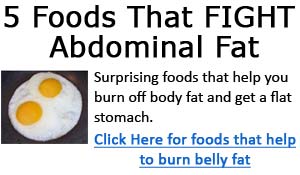The 20-minute cardio elevated your heart rate and took you into an anaerobic zone where your body accumulated an “oxygen debt” - a need for oxygen and fat burning to help flush waste from your system and recover from the intense exercise. So during a 24-hour window, you will burn MORE than the 200 calories, and therefore be closer to your fat loss goal.
MAXIM 2: Find cardio that you enjoy, and do it when you feel you have the most energy
There are many styles of cardio. There is some debate about what cardio is best for you. People preach about training in the “zone” of a particular heart rate for maximum fat burning benefit. While it is true that your body will utilize more fat for energy during this period, this is not the entire picture. Moderate cardio means your body will recover quickly - your heart rate will return to normal within a short period. Intense cardio, which elevates your heart rate beyond the “zone”, may not burn as much fat during the exercise, but your body will take longer to recover. Your body must process waste and your heart rate will remain elevated for hours after the bout of exercise. You will burn more calories throughout the day, and therefore you will receive a superior benefit.
 While there is no hard, scientific evidence to support
this next maxim, I truly believe in it. I have witnessed
this not only in my own transformation, but also with countless
others as well.
While there is no hard, scientific evidence to support
this next maxim, I truly believe in it. I have witnessed
this not only in my own transformation, but also with countless
others as well.
MAXIM 3: The less time it takes to burn the same amount of calories, the more calories you will expend later that day
This maxim may seem confusing, but it’s very simple. It means that if you are going to burn 200 calories, when you burn that 200 calories in 20 minutes instead of 1 hour, your metabolism will increase throughout the day and you’ll end up burning MORE than 200 hours when that day is done. This is why high intensity interval cardio, like that recommended in David Greenwalt’s book, “The Leanness Lifestyle” or the “20-Minute Aerobic Solution[tm]” which is recommended by Bill Phillips in Body-for-LIFE™ is so effective - it burns the most amount of fat in the shortest period of time.
Just because high intensity cardio may burn more calories doesn’t make it superior to moderate cardio except with respect to calories burned. There is some evidence that you may improve your cardiovascular health more quickly with high intensity cardio, but this is no reason to discard your long runs. If you have a busy schedule and wish you fit 3 short, 20-minute sessions, then intensity is the way to go. If, however, you truly enjoy your long bike ride or jog on the weekends, then go ahead and do it - you will still be improving your health and burning calories, and if it is something that you enjoy, you will stick with it! Remember, too, that if you are training for a marathon, all of the 20-minute high intensity cardio in the world will not prepare you fully to run 20+ miles. You must perform the moderate, long duration cardio to prepare your body for the event.
This leads us to another maxim. Your heart rate can provide you a lot of information about your training. Over time, your resting heart rate should decrease. Mine went from the high 60’s to a current value of 48 due to my cardiovascular conditioning. When you train with weights, you can use a heart rate monitor to see what your target heart rate is (weight training will take it to the anaerobic levels, or about the maximum heart rate you would want to train at) - this will provide much better feedback than a generic formula. By tracking your heart rate, you can monitor your effort. If you train today at 160bpm then have a lousy day and don’t feel like you’re receiving any benefit, use your heart rate as a guide. As long as you are pushing hard enough to hit that 160bmp mark again, you know you are getting at least the same intensity from your training as the time before.
>> Click here for Tom Venuto's Burn the Fat Feed the Muscle program (a must have for anyone serious about losing body fat and getting fit!)

 Cardiovascular exercise is an important component of general
health. While certain people may require different amounts
and types of cardio, everyone should engage in at least
a little cardiovascular activity each week. There are many
methods for training which all have their advantages. You
should learn what works for you and what you truly enjoy
so that you will continue to perform cardio and reap benefits
of good health.
Cardiovascular exercise is an important component of general
health. While certain people may require different amounts
and types of cardio, everyone should engage in at least
a little cardiovascular activity each week. There are many
methods for training which all have their advantages. You
should learn what works for you and what you truly enjoy
so that you will continue to perform cardio and reap benefits
of good health.